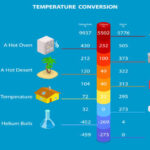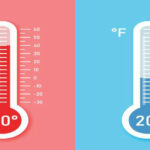Air travel is one of the safest forms of transportation in the world. Every day, thousands of aircraft take off and land safely, carrying millions of passengers. Yet, when an airplane crash does occur, it captures global attention due to its intensity and tragic consequences. Understanding airplane crashes requires exploring more than just the incident itself—it involves a deep look into aviation technology, human factors, weather conditions, and the continuous improvements that keep modern aviation remarkably safe.
This article aims to provide a comprehensive, informative, and human-centered explanation of airplane crashes—their causes, investigation processes, historical lessons, and the remarkable efforts that make air travel one of the most reliable modes of transport today.
1. What Is an Airplane Crash?
An airplane crash is a catastrophic event where an aircraft experiences severe malfunction, loss of control, or collision resulting in damage, injury, or fatalities. Crashes may occur during takeoff, flight, or landing phases. While the word “crash” evokes fear, aviation authorities define such events under broader categories, including accidents, incidents, and near misses.
An accident typically involves structural damage or casualties, while an incident refers to a potentially hazardous event that did not result in a crash but indicates a risk factor. Understanding these distinctions is vital because every incident is analyzed to prevent future accidents.
Airplane crashes are rare compared to the enormous number of flights worldwide. Statistically, the likelihood of being involved in an airplane crash is less than one in eleven million. Despite their rarity, they remain crucial areas of study because each crash contributes to significant improvements in global aviation safety.
2. Major Causes of Airplane Crashes
Aviation accidents rarely occur due to a single factor. Most crashes result from a chain of events, combining mechanical, environmental, and human elements. Below is a table summarizing the primary causes and their approximate involvement percentages based on industry analysis (conceptual, not sourced):
| Cause Category | Description | Estimated Contribution |
|---|---|---|
| Human Error | Mistakes by pilots, air traffic controllers, or maintenance crews. | 45–55% |
| Mechanical Failure | Faults in engines, control systems, or structure. | 20–25% |
| Weather Conditions | Storms, turbulence, icing, or poor visibility. | 10–15% |
| Bird Strikes / External Factors | Birds or debris impacting engines or sensors. | 5–10% |
| Sabotage / Security Threats | Terrorism, hijacking, or deliberate actions. | 2–5% |
| Unknown / Rare Causes | Unidentified mechanical or environmental events. | 1–3% |
Each factor involves multiple subcategories. For instance, “human error” might include fatigue, miscommunication, or incorrect decision-making under stress, while “mechanical failure” might involve design flaws or maintenance lapses.
In modern aviation, technological advancements, stricter regulations, and simulation-based training have significantly reduced the probability of these factors leading to catastrophic outcomes.
3. The Role of Human Error
Despite automation and advanced technology, humans remain central to aviation safety. Pilots, engineers, and air traffic controllers make thousands of decisions daily, and even minor misjudgments can have large consequences.
Common Human Factors in Crashes:
- Pilot fatigue: Long flight hours can reduce alertness.
- Miscommunication: Errors in verbal communication between cockpit and control tower can cause confusion.
- Improper training: Failure to recognize rare emergencies or system malfunctions.
- Distraction and complacency: Overreliance on autopilot systems can reduce situational awareness.
To counter these, modern aviation emphasizes Crew Resource Management (CRM) — a system that promotes teamwork, decision-sharing, and error detection among crew members. CRM has proven highly effective in preventing many potential disasters.
4. Mechanical and Technical Failures
Aircraft are engineering marvels built with redundancy—meaning every critical function has a backup. Still, technical failures can occur.
Common Mechanical Issues Include:
- Engine failure: Caused by component fatigue, fuel contamination, or bird ingestion.
- Hydraulic system faults: Affect control surfaces such as flaps or rudders.
- Electrical malfunction: Can interfere with communication and navigation.
- Structural failure: Cracks or corrosion in fuselage or wings.
Even when such failures happen, pilots are trained to handle them calmly. For instance, twin-engine aircraft can fly safely on a single engine. Modern diagnostics also use predictive maintenance systems to detect problems before they become critical, vastly reducing crash risks.
5. Weather-Related Causes
Mother Nature plays a powerful role in aviation safety. Sudden weather shifts can challenge even the most experienced pilots.
| Weather Factor | Effect on Aircraft | Preventive Measures |
|---|---|---|
| Thunderstorms | Strong winds and lightning can destabilize aircraft. | Weather radar, flight path deviation. |
| Turbulence | Rapid air movement causing passenger discomfort or control difficulty. | Predictive turbulence alerts. |
| Icing | Ice formation on wings reduces lift. | Wing heating systems. |
| Fog / Poor Visibility | Complicates takeoff and landing. | Instrument Landing Systems (ILS). |
Advances in meteorology and onboard weather radar have made flying safer than ever, but pilots must always be prepared for sudden environmental changes.
6. The Process of an Airplane Crash Investigation
When an airplane crash occurs, an immediate investigation begins. This process is handled by national and international authorities like the National Transportation Safety Board (NTSB) or the International Civil Aviation Organization (ICAO).
Step-by-Step Investigation Process:
- Initial Response and Site Security:
Emergency teams secure the area, recover survivors, and protect evidence. - Data Recovery:
Investigators locate and retrieve the Flight Data Recorder (FDR) and Cockpit Voice Recorder (CVR)—often called “black boxes.” These devices record crucial flight parameters and cockpit conversations. - Wreckage Examination:
The aircraft’s debris is analyzed to identify mechanical or structural issues. - Interviews and Documentation:
Witnesses, air traffic controllers, and maintenance crews provide testimonies. - Simulation and Reconstruction:
Investigators recreate the flight digitally to understand the sequence of events. - Final Report and Recommendations:
Findings are published, and recommendations are made to prevent similar incidents.
Each investigation may take months or even years. The focus is not blame, but learning — turning tragedy into progress.
7. Black Boxes: The Truth Recorders
The Flight Data Recorder (FDR) and Cockpit Voice Recorder (CVR) are often the most critical evidence in understanding a crash. Despite the name, black boxes are bright orange for visibility.
| Device | Function | Data Recorded |
|---|---|---|
| FDR (Flight Data Recorder) | Records flight parameters. | Speed, altitude, engine power, control inputs. |
| CVR (Cockpit Voice Recorder) | Captures cockpit sounds and conversations. | Pilot dialogue, alarms, ambient sounds. |
Black boxes are built to survive extreme heat, pressure, and impact. Modern technology now allows real-time flight data streaming, reducing the reliance on physical recovery after a crash.
8. Safety Evolution After Major Crashes
Every major airplane crash throughout history has led to crucial safety upgrades. For example:
- Mid-air collisions led to the creation of Traffic Collision Avoidance Systems (TCAS).
- Fuel tank explosions inspired stricter regulations for fuel system design.
- Pilot disorientation accidents led to better cockpit automation and training.
- Runway overruns encouraged the development of Engineered Materials Arresting Systems (EMAS).
This continuous improvement cycle makes flying today far safer than decades ago. The aviation fatality rate has dropped by more than 90% since the 1960s.
9. The Human Side of Airplane Crashes
Beyond technical analysis, airplane crashes carry deep emotional and psychological impacts. Survivors often experience post-traumatic stress, while families of victims face grief and unanswered questions.
Aviation authorities now prioritize victim support programs, including:
- Psychological counseling for survivors and relatives.
- Transparent communication about investigation progress.
- Memorialization to honor those lost.
Such measures ensure compassion accompanies the technical rigor of aviation safety management.
10. How Technology Prevents Crashes Today
Modern aircraft are equipped with cutting-edge safety technology designed to prevent human or mechanical failure from resulting in a crash.
| System | Purpose | Benefit |
|---|---|---|
| Autopilot and Fly-by-Wire | Stabilizes flight and corrects pilot errors. | Reduces fatigue and improves accuracy. |
| Ground Proximity Warning System (GPWS) | Alerts pilots of approaching terrain. | Prevents controlled flight into terrain (CFIT). |
| Traffic Collision Avoidance System (TCAS) | Detects and avoids mid-air collisions. | Enhances situational awareness. |
| Weather Radar Systems | Monitors storms and turbulence. | Allows rerouting before danger. |
| Predictive Maintenance Systems | Detect faults before failure. | Reduces mechanical issues. |
The synergy between automation, training, and data analytics ensures that even when problems arise, systems are in place to prevent disaster.
11. Airline Safety and Pilot Training Standards
Airline safety depends on rigorous pilot training, routine maintenance, and global standardization.
Key Safety Practices:
- Regular simulation training: Pilots train for every possible emergency, from engine failure to cabin decompression.
- Maintenance cycles: Aircraft undergo detailed inspections after a set number of flight hours.
- Standardized communication: Pilots use globally recognized aviation English and protocols to prevent miscommunication.
- Fatigue management: Airlines now limit flight hours and require adequate rest periods.
Together, these measures create multiple layers of safety—so even if one fails, others compensate.
12. Psychological and Social Repercussions
Crashes deeply affect society’s perception of air travel. After each major incident, fear and anxiety about flying often rise temporarily. However, education and transparency help restore confidence.
Airlines now invest in passenger communication, explaining safety protocols and emergency procedures during flights. Understanding how rare and well-prepared aviation systems are can help ease public fears.
13. Media and Public Perception
Media coverage of airplane crashes often focuses on tragedy, but not always on the subsequent progress. While it’s essential for accountability, sensational reporting can distort public understanding.
Balanced communication must include context: the number of safe flights that occur daily, ongoing investigations, and the improvements derived from every incident. Responsible journalism helps build awareness without spreading panic.
14. The Future of Aviation Safety
The future of aviation is driven by innovation and artificial intelligence. Predictive technologies will make flying even safer.
Emerging Safety Innovations:
- AI-based anomaly detection: Predicts problems from millions of flight data points.
- Autonomous flight systems: Reduce reliance on human input in emergencies.
- Satellite-based navigation (NextGen): Enhances precision and reduces congestion.
- Electric and hybrid propulsion: Reduces mechanical complexity and emissions.
The long-term goal is not only to reduce crashes but to approach zero fatal accidents globally—a vision supported by international organizations and research institutions.
15. Learning from the Past: A Symbol of Progress
Every airplane crash teaches the aviation world valuable lessons. For instance:
- The importance of clear pilot-controller communication.
- The need for mental health support for flight crews.
- The critical role of technology in early fault detection.
What once led to tragedy now drives innovation. This transformation defines modern aviation — learning from loss to protect future generations.
Conclusion
An airplane crash represents one of humanity’s greatest fears, yet it also highlights our incredible capacity to learn, adapt, and improve. Every investigation, every safety reform, and every pilot training session is a tribute to the lives lost in previous accidents.
Today, thanks to science, engineering, and international cooperation, air travel is safer than ever before. For every tragic crash that makes headlines, millions of successful, uneventful flights occur daily — carrying families, goods, and dreams across the skies.
The story of aviation is not one of disaster, but of resilience — a testament to human ingenuity turning tragedy into progress. The continued dedication of pilots, engineers, and safety experts ensures that while airplane crashes may never vanish completely, their frequency and impact will continue to decline, bringing us closer to a truly safe sky for all.
FAQs
1. What causes most airplane crashes?
Most airplane crashes result from a combination of factors such as human error, mechanical failure, or adverse weather. Rarely does a single issue cause an accident.
2. How often do airplane crashes happen?
Airplane crashes are extremely rare. Millions of flights operate safely every year, making air travel statistically safer than driving or even walking.
3. What happens after a plane crash?
Authorities immediately begin investigation and recovery efforts. Black boxes are analyzed, and safety recommendations are issued to prevent recurrence.
4. How do modern planes prevent crashes?
Modern planes use advanced systems like autopilot, radar, collision avoidance, and predictive maintenance to detect and correct issues early.
5. Is flying really safe today?
Yes. Air travel is the safest major transportation method. Continuous technological advances and strict training keep risks extremely low.







